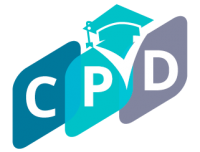Introduction:
In the era of digital advancements, analog methods of studying are experiencing a resurgence, as students and learners recognize the unique benefits of tactile engagement with information. Handwriting, mindful reading, and sketching offer a holistic and effective approach to studying that goes beyond the screen. In this article, we will explore the advantages of these analog methods and how they contribute to a more mindful and immersive learning experience.
- The Power of Handwriting: In the age of laptops and tablets, the act of handwriting often takes a backseat. However, research suggests that there is a deep connection between handwriting and memory retention. The physical act of writing engages motor skills and different parts of the brain, contributing to enhanced comprehension and recall. When studying, consider taking handwritten notes instead of typing. Whether it’s jotting down lecture points, summarizing readings, or creating flashcards, the act of forming letters manually can reinforce learning and imprint information in a way that is distinct from typing on a keyboard.
- Mindful Reading for Deep Understanding: Mindful reading involves a purposeful and engaged approach to the material, encouraging a deep understanding of the content. In a world inundated with information, where skimming and scanning are prevalent, mindful reading stands out as a deliberate practice that fosters comprehension and critical thinking. When engaging with written material, set aside dedicated time for mindful reading. Eliminate distractions, immerse yourself in the text, and actively engage with the content. Take pauses to reflect on key points, ask questions, and connect new information with prior knowledge. This intentional approach contributes to a more profound understanding of the material.
- Sketching for Visual Learning: Sketching is a powerful tool for visual learners and those seeking to convey complex ideas in a more accessible format. Visualizing information through sketches or diagrams can aid in the comprehension of abstract concepts, making them more tangible and memorable. When faced with intricate information or complex theories, consider creating visual representations through sketches. Whether it’s a concept map, a flowchart, or a diagram, the act of translating ideas into visual elements can enhance understanding and serve as a valuable study aid.
- Enhanced Cognitive Engagement: Analog methods of studying, such as handwriting and sketching, engage different cognitive processes compared to their digital counterparts. The tactile feedback of pen on paper or the creative process of sketching stimulates sensory experiences that contribute to increased cognitive engagement. When you physically write or draw, you activate fine motor skills and involve multiple senses in the learning process. This multisensory engagement can lead to a deeper connection with the material and improved retention compared to more passive digital methods.
- Reducing Digital Fatigue: Constant exposure to screens, especially during extended study sessions, can contribute to digital fatigue. Analog methods provide a welcomed break from the constant glow of screens, reducing eye strain and promoting a more relaxed and focused studying environment. Incorporate analog methods into your study routine as a deliberate strategy to counterbalance digital fatigue. Whether it’s switching to handwritten notes for a portion of your study session or incorporating sketching exercises, these analog approaches offer a reprieve from the digital realm.
- Fostering Creativity and Expression: Handwriting and sketching allow for a personalized and creative expression of ideas. The act of forming words by hand or creating visual representations provides a unique opportunity for self-expression and creativity. This personal touch in note-taking and studying can make the learning experience more enjoyable and meaningful. Experiment with different styles of handwriting, use colors and doodles in your notes, and explore creative ways to represent information visually. This element of personalization not only enhances engagement but also taps into your individual learning preferences.
- Building a Tangible Study Archive: Analog methods contribute to the creation of a tangible study archive. Handwritten notes, annotated texts, and sketched diagrams can be compiled into a physical study portfolio. This tangible archive serves as a visual representation of your learning journey, allowing you to revisit and reflect on your progress over time. Consider keeping a dedicated notebook for handwritten notes or a sketchbook for visual representations. The tangible nature of these study artifacts can be particularly rewarding and offer a sense of accomplishment.
- Connecting with Material on a Deeper Level: Analog methods provide an opportunity to connect with the study material on a deeper level. The intentional and mindful nature of handwriting and sketching fosters a sense of presence and engagement. As you physically interact with the material, you develop a more intimate relationship with the content, contributing to a richer and more meaningful learning experience.
- Adapting Analog Methods to Digital Platforms: While analog methods offer unique benefits, they can be seamlessly integrated into the digital landscape. Consider leveraging technology to enhance analog methods—for example, using tablets or digital sketching tools for creating visual representations or typing up handwritten notes to create searchable digital archives. This hybrid approach allows you to enjoy the tactile benefits of analog methods while harnessing the convenience and accessibility of digital platforms.
- Mindful Transition Between Analog and Digital: Recognize the value of a mindful transition between analog and digital methods. There may be instances where digital tools are more practical, such as collaborative projects, research, or accessing online resources. Being mindful of when to switch between analog and digital methods allows you to leverage the strengths of each approach effectively.
Conclusion:
Incorporating analog methods, such as handwriting, mindful reading, and sketching, into your study routine can offer a transformative and enriching learning experience. These methods provide a holistic approach that engages different cognitive processes, fosters creativity, and contributes to a deeper understanding of the material. As you navigate the digital landscape, consider embracing analog techniques to enhance your study sessions and create a more mindful and immersive learning journey.
